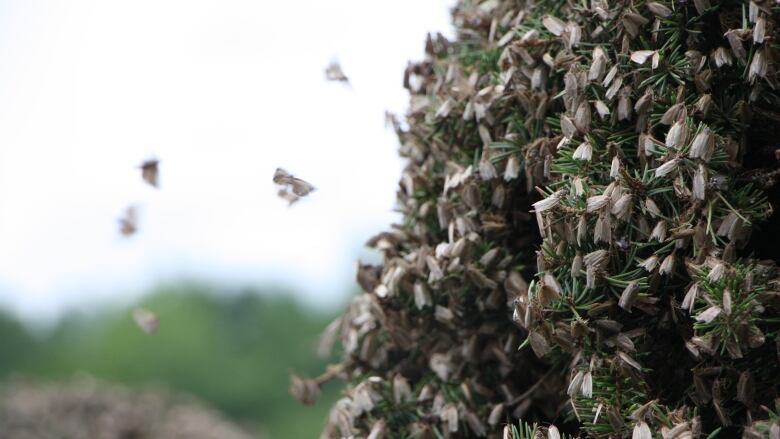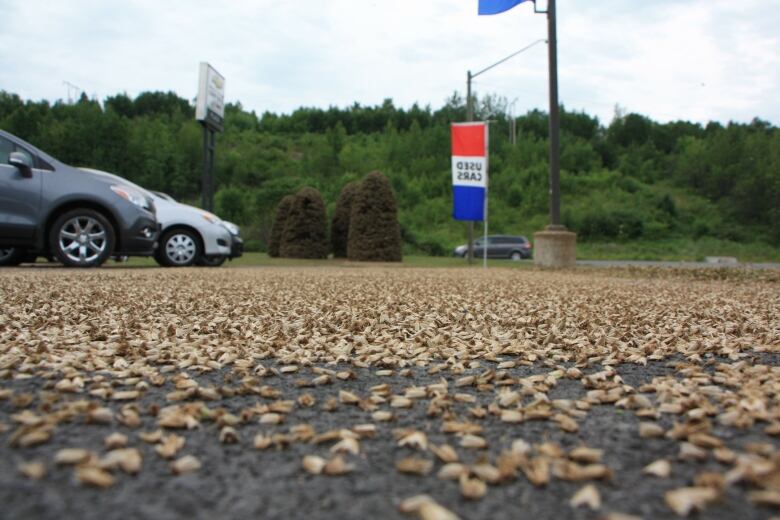Volunteers help track a major forest pest, the budworm
'I would be really surprised if when we look at the traps in P.E.I., we didn't see this sort of influx'

Twenty-five volunteers across P.E.I. are trapping and collecting spruce budworm moths this summer as part of the budworm tracker program.
Four-hundred volunteers across eastern Canada and in Mainecollect the information and samples during flight season in July and August. Each day volunteers collect the moths, thenput them in the freezer before sending them along to scientists.
The budworm, which attacks spruce and fir trees and is the major pest of forests in eastern Canada,cycles every 30 or 35 years, and scientists believe we are in the early stages of the next outbreak.
Dr. Rob Johns,a forest insect ecologist with the Canadian Forest Service in Fredericton, N.B., and the lead of the project, saidthere was a recent mass migration of the budworm in the Campbellton, N.B., area and information from volunteers showed echoes as far east as Shediac.

An 'influx' of moths
"I would be really surprised if when we look at the traps in Prince Edward Island, we didn't see this sort of influx of moths there. Most of what you see there in these traps are basically migrants coming from elsewhere," said Johns.
I would be really surprised if when we look at the traps in Prince Edward Island, we didn't see this sort of influx of moths there.- Dr. Rob Johns
"The question still remains, though, that even though we find these moths in southern New Brunswick or potentially Prince Edward Island, it is not a sure thing that that necessarily means there is going to bebudwormthere actively feeding in the subsequent year."
The information gathered by the program determineswhere the highest densities of moths are in the region and whether something needs to be done to manage them.
- MORE P.EI. NEWS IFormer P.E.I. RCMP officer Jeffrey Rae Gillis faces 12 weapons charges
- MORE P.E.I. NEWS I1 dead in collision between transport and car near Cap-Pel












_(720p).jpg)


 OFFICIAL HD MUSIC VIDEO.jpg)
.jpg)



























































































